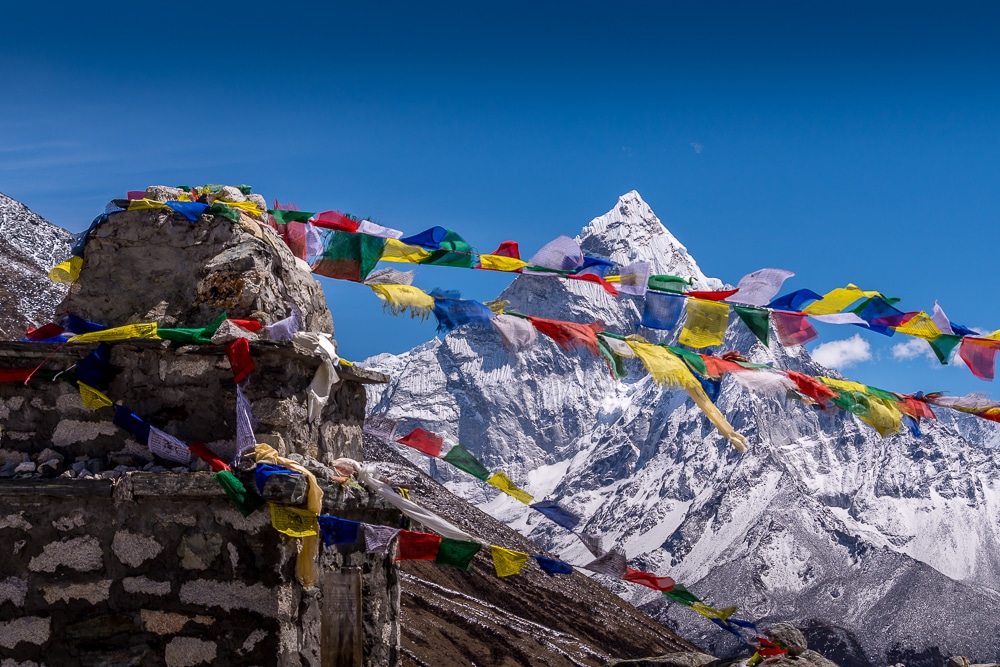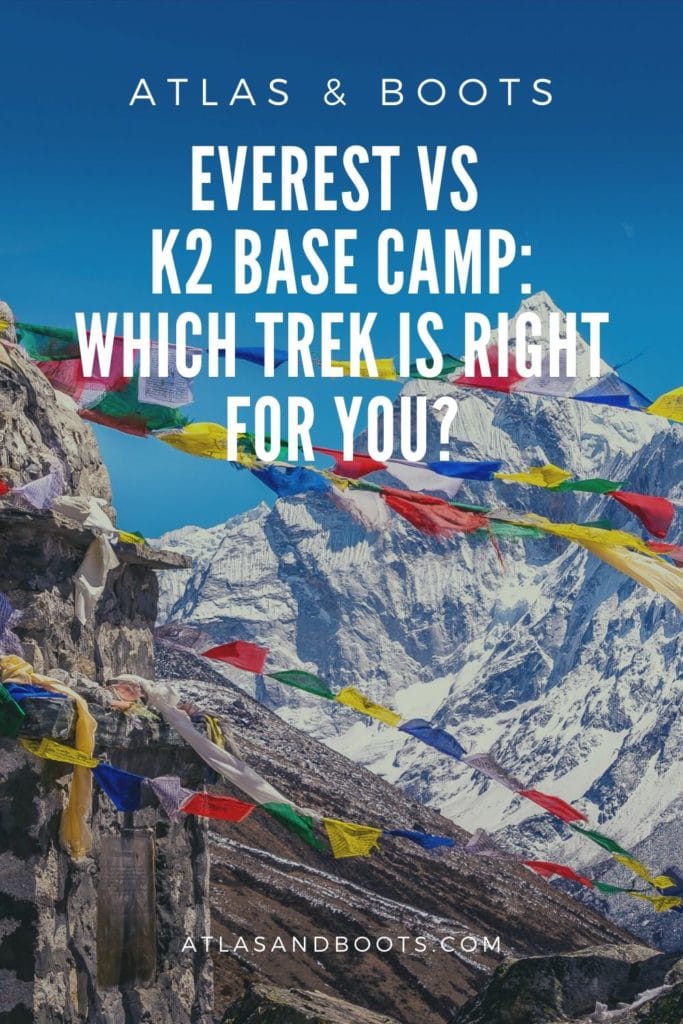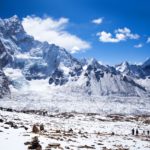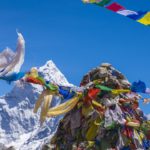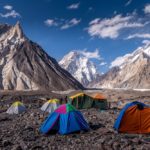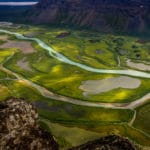Everest vs K2 base camp – what’s the difference? We compare the two classic treks
Since the first successful ascent of Mount Everest in 1953, followed by K2 in 1954, the Himalayas and its satellite ranges have become far more accessible to trekkers. The 4,000km crescent of mountains that stretches from Kyrgyzstan to Burma was once solely the domain of professional mountaineers.
These days, there are myriad ways to experience the highest mountains on Earth. From multi-day treks and luxury lodges to cultural tours and “under-the-skin” homestays, Asia’s great peaks are open for exploration.
This year, I completed base camp treks to the world’s highest and second highest mountains. In spring, I visited Nepal to complete the Everest base camp trek. Just a few months later, I was clambering over the shifting glaciers and snow-filled ravines of the K2 base camp trek in Pakistan.
The two treks clearly share similarities. They are both high-altitude base camp treks through the highest mountain ranges on Earth, but they are acutely different too. They pass through two uniquely diverse countries with different environments and cultures. With that comes different rewards and challenges.
Below, we pitch the two treks against each other – Everest vs K2 base camp – to help you decide which one may offer your next great adventure.
Everest vs K2 at a glance
| Everest | K2 | |
|---|---|---|
| Mountain height | 8,848m (29,029ft) | 8,611m (28,251ft) |
| Base camp altitude | 5,364m (17,598ft) | 5,150m (16,896ft) |
| Maximum trek altitude | 5,643m (18,513ft) | 5,560m (18,241ft) |
| Duration | 12 days | 14 days |
| Distance | 130km | 160km |
| No. of trekkers (annually) | 30,000 | 1,300 |
| Range | Himalaya | Karakoram |
| Country | Nepal | Pakistan |
Terrain
The Everest base camp trek (EBC) is along a well-established waymarked trail all the way to base camp. The trail is signposted and solid underfoot and sees a steady stream of walkers throughout the season. All this combines to make it very hard to get lost. It can even be seen and tracked on Google Maps and other navigation apps.
On the K2 base camp trek (K2BC), the terrain is far more challenging and the trails less defined. You won’t see any signs along the K2BC. In fact, once onto the Baltoro Glacier after the initial few days of walking, trail-spotting becomes part of the challenge itself.
On the Baltoro Glacier, trails are constantly changing as the ice shifts and crevasses open and close. As such, a degree of cross-country walking is to be expected. It’s also not unusual for rivers to swell to excessive levels or even wash away bridges altogether. On my trek, our group was twice delayed due to swollen rivers. On one occasion, we had to skirt around to another crossing after a bridge washed away. On another, we had to ford a tributary further upstream.
Accommodation
On the EBC in Nepal, you can hike into the heart of the high Himalaya safe in the knowledge that at the end of the day you can count on a hot meal, clean bed and a cosy dining room-cum-lounge. Many of the teahouses even have hot water, electricity and wifi.
On the K2BC in Pakistan, the only accommodation available is camping. All 14 nights will be spent under canvas and usually on rocky ground. Once onto the Baltoro Glacier, you’ll be camping on ice for at least four nights, which can be frightfully cold (thick camping mattresses are essential). There is no electricity, hot water or wifi on the trail.
Some of the campsites have simple drop-toilet facilities, but trekkers should plan for doing their business in the wild most of the time. Please do your utmost to leave no trace in the process. Urdukas is the only campsite with running water, albeit cold.
Villages
Part of the charm of trekking the EBC is passing through the colourful villages replete with teahouses, restaurants, monasteries, souvenir shops, cafes and even the odd pub.
On the K2BC, the only villages are at the start and the end of the trail. Askole is where the trail begins and chances are you’ll spend just one night there following a long drive. Trekkers will either return to Askole briefly on their final day or, if completing the Gondogoro La Pass, continue to the village of Hushe.
Currently, neither village has anything like the kind of infrastructure seen in the villages on the EBC.
Scenery
There’s no denying that the scenery along the EBC is more varied than the K2BC. The EBC begins amid lush forests with emerald rivers coursing their way along the valleys. Once above the treeline, the scenery naturally becomes more alpine as rock and ice dominate. There is a real sense of journey as you progress upwards through the various climatic zones.
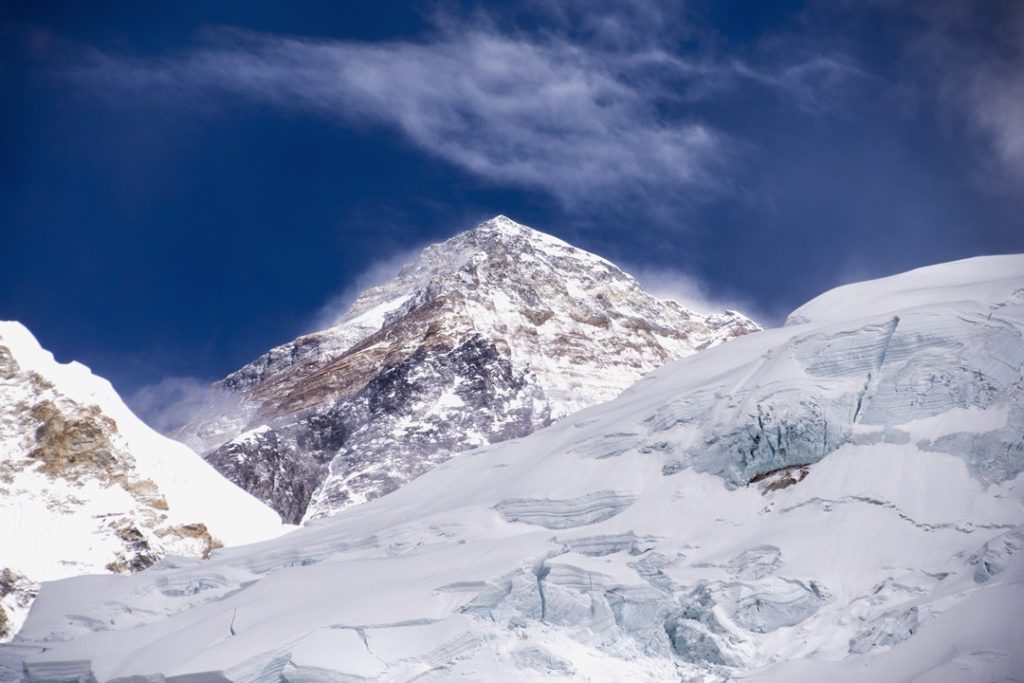
K2BC has flashes of green at lower altitudes, but generally the trail is drier and dustier, particularly early on. However, for mountain aficionados the peaks of the Karakoram seem more impressive. Even though they’re around the same height as the massifs on the EBC, the mountains along the K2BC appear more imposing as they are unobstructed by their neighbouring ranges.
On the approach to Everest base camp, trekkers get only sporadic glimpses of its summit as its satellite peaks effectively hide it. K2 in contrast towers above the surrounding massif, completely unimpeded. It may be second in stature to Everest, but it has a grace and symmetry that, in my mind, make it the most striking of the 14 eight-thousanders.
Crowds
In 2018, just 900 tourists registered to enter the Central Karakoram National Park (CKNP) where the K2BC is located in Pakistan. When my trekking party entered in early September 2019, as one of the last groups of the year, that number had risen to 1,300.
Despite the increase, it’s worth remembering that over 30,000 people do the Everest base camp trek every year. Pakistan still has a long way to go to catch up with its Himalayan neighbour.
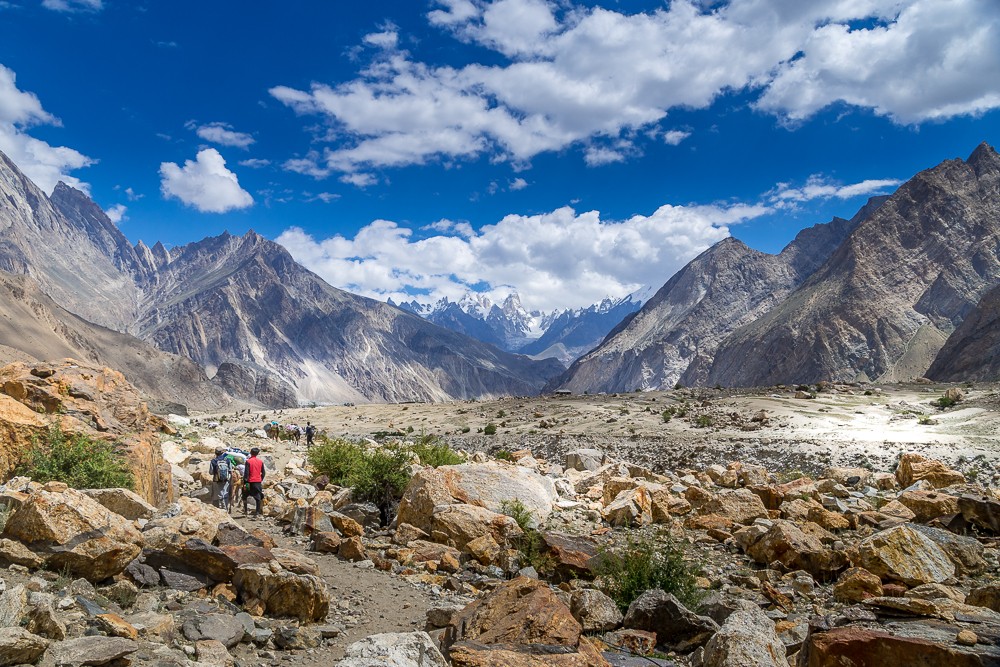
I wouldn’t necessarily describe the EBC as crowded, but it’s unlikely you’ll have long stretches of the trail to yourself. On the K2BC it’s the opposite. I regularly found myself walking alone with not a soul in sight in either direction.
Access
It’s not just a matter of Everest vs K2, but also Nepal vs Pakistan. This year, Pakistan increased the availability of tourist visas and developed an online e-visa system which makes entering the country largely as straightforward as Nepal. Once in Kathmandu, to get to the start of the EBC, all you have to do is catch a short but thrilling flight to Lukla.
From Islamabad in Pakistan, there is also only a short flight to Skardu. But then to get from Skardu to the trailheads at Askole and Hushe a transfer in a 4WD vehicle is necessary. Both journeys take around six hours.
Luggage logistics
Nepal sets the standards for hassle-free trekking, especially along the teahouse trails of Everest and Annapurna. The trail is well supported and it’s actually possible to buy or rent all the gear you are likely to need either in Kathmandu or in Namche Bazaar on the trail.
There are strict weight limits on the domestic flight from Kathmandu to Lukla. The flight only allows for 10kg of checked luggage and 5kg of hand luggage. This coincides with the maximum weight porters are allowed to carry: 10kg per trekker with a maximum of two trekkers per porter.
- Read our Everest base camp kit list for more information.
Packing for trekking in Pakistan requires a little more planning. It is possible to buy some equipment in Skardu or Islamabad, but neither has the same range of shops as Kathmandu or Namche Bazaar. As such, I would advise that trekkers do all their shopping before leaving home to prevent last-minute emergencies.
The upside is there are no weight limits on either of the flights or the drive to Skardu. Although for your and your porter’s sake, I would recommend keeping your luggage well below 20kg in total.
- Read our K2 base camp gear list for more information.
Solo or supported
The Everest base camp can be completed solo quite easily. It’s perfectly plausible to just turn up in villages and seek out accommodation and food options for the night. Additionally, as there is wifi and phone reception along much of the trail, it’s relatively easy to organise accommodation en route using the internet.
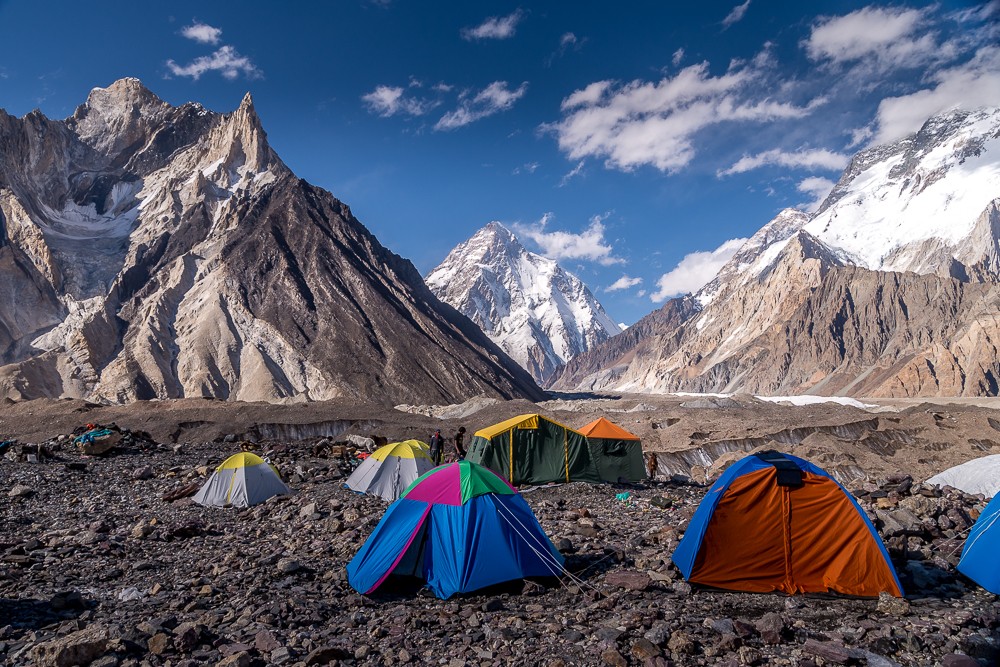
As trekkers don’t need to carry camping and cooking equipment, backpack weights can be kept to a minimum. However, trekkers often choose to hire a guide and/or a porter to help them, or join an organised trek as I did with G Adventures.
Essentially, trekking in Nepal is logistically as easy as it gets whether you wish to do it solo or supported.
In Pakistan you have less choice. All foreigners trekking to K2BC must have a licensed guide with them. Foreigners will not be allowed to enter the park without a guide. Therefore, it is not possible to trek to K2 base camp solo, but it does mean your guide will organise all the permits and administration (see below).
I joined Lost Horizon Tours and Treks on a trek to K2 base camp combined with a technical crossing of the Gondogoro La Pass. All the fees and administration were included.
Administration
To trek to Everest base camp you must enter Sagarmāthā National Park on the second day of the trek where you will need to pay a national park fee. For foreigners not from a South Asian Association for Regional Cooperation (SAARC) country, the fee is 3,000 NPR ($30 USD) per person. Check the full list of park entry fees in Nepal.
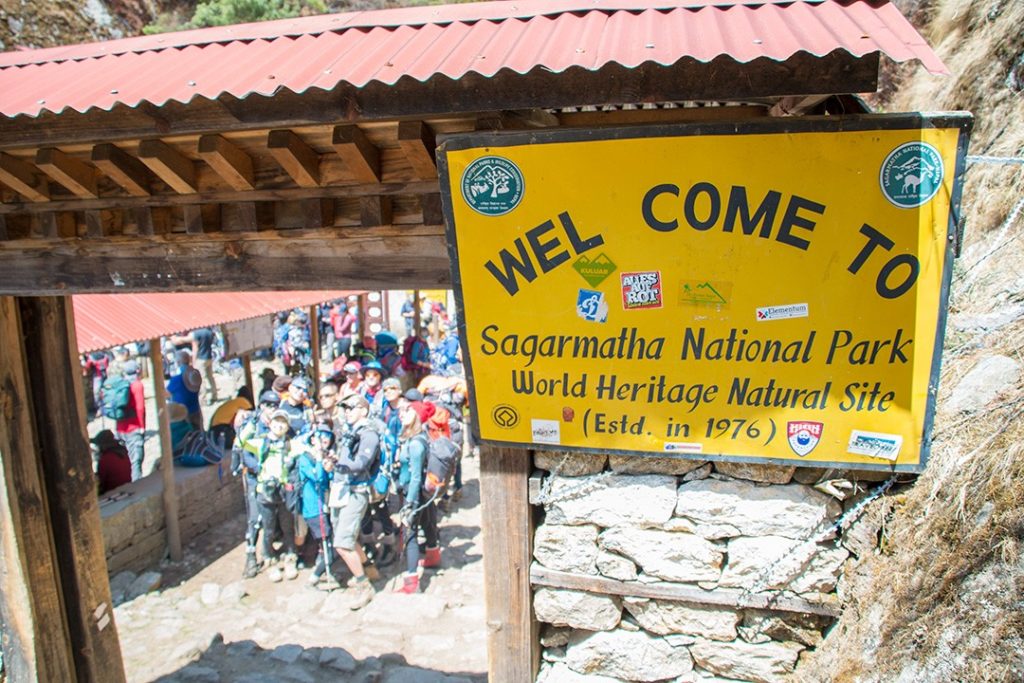
To trek to K2 base camp, you must enter CKNP where you will need to pay a national park fee and complete a registration form. For foreigners, the fee is $10 USD per person. View the full list of park entry fees.
Additionally, trekkers must obtain a No Objection Certificate (NOC) at the tourism office in Skardu. This permit allows you to travel in a restricted military area. The CKNP is in such an area as it borders India and China.
Both of these permits will be organised by your trekking company and only take a few minutes at each office.
Costs
Costs on the ground in Nepal vary depending on how you choose to trek. Obviously, going solo without any support will be the cheapest option. This could be done for as little as $40 USD per day for three meals and a bed in a basic teahouse – maybe as little as $500 USD in total (not including flights to and from Lukla).
I joined a G Adventures 15-day trek to Everest base camp with a round trip from Kathmandu, which cost around $1,000 USD, plus $400-600 USD for meals along the trail and $150 USD for tips – around $1,700 USD in total. If you were to trek semi-supported and hire a guide and/or a porter, it would cost somewhere in between.
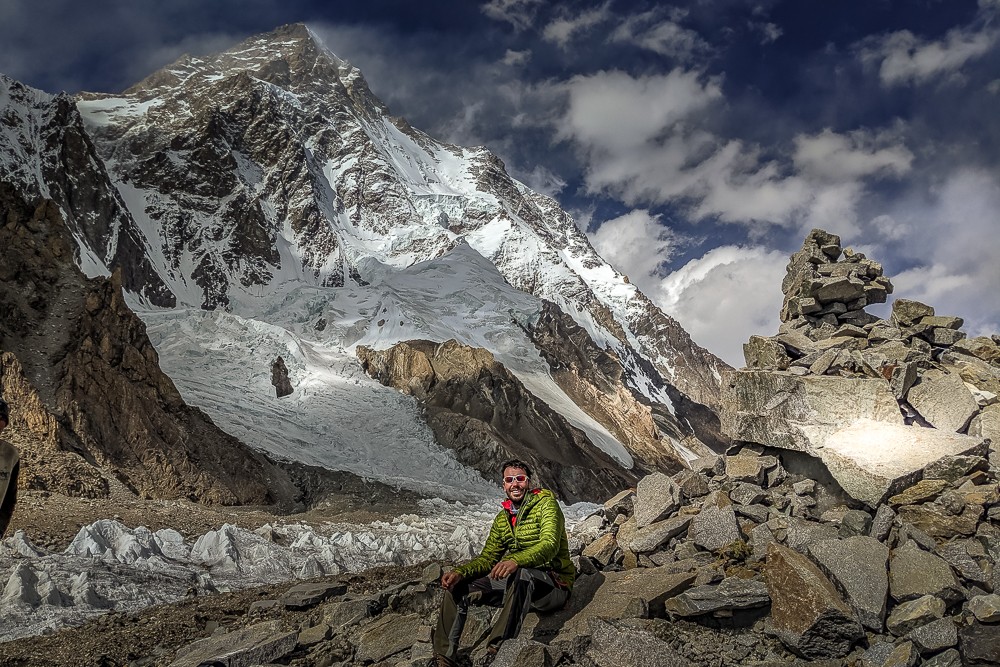
For the K2 base camp trek, prices start from around $2,000 USD, depending on dates and itinerary, for a round trip from Islamabad. The price includes all accommodation, all meals on the trek, an English-speaking local guide and assistants throughout the trek, porters to carry equipment between camps, entrance fees to the national park and all transport between destinations. Allow an extra $200-300 USD per person for tips, making the total around $2,300 USD.
Difficulty
Despite the similarities in altitude, the terrain and logistics of the K2BC make it a significantly harder trek. The days on the trail are longer and more strenuous with fewer luxuries at the end of a day to offset the discomfort.
If I were to give them marks out of 10 for difficulty (10 being the hardest), I would give the EBC a six or seven, and the K2BC an eight or nine. Be under no illusions: the K2BC is a tough trek.
Everest vs K2: in summary
There is no denying that the K2 base camp trek is the harder trek. It is in a more remote location that is harder to access. It is in a country and region that lacks the trekking infrastructure developed over decades in Nepal.
But, and this is a big but, I believe the K2 base camp trek is more rewarding, more wild, more thrilling and ultimately more fun.
That said, K2BC should not be your first high-altitude trek. The EBC is a perfect introduction to high-altitude expedition-style trekking. Everyone on my K2 base camp trek had also completed the EBC.
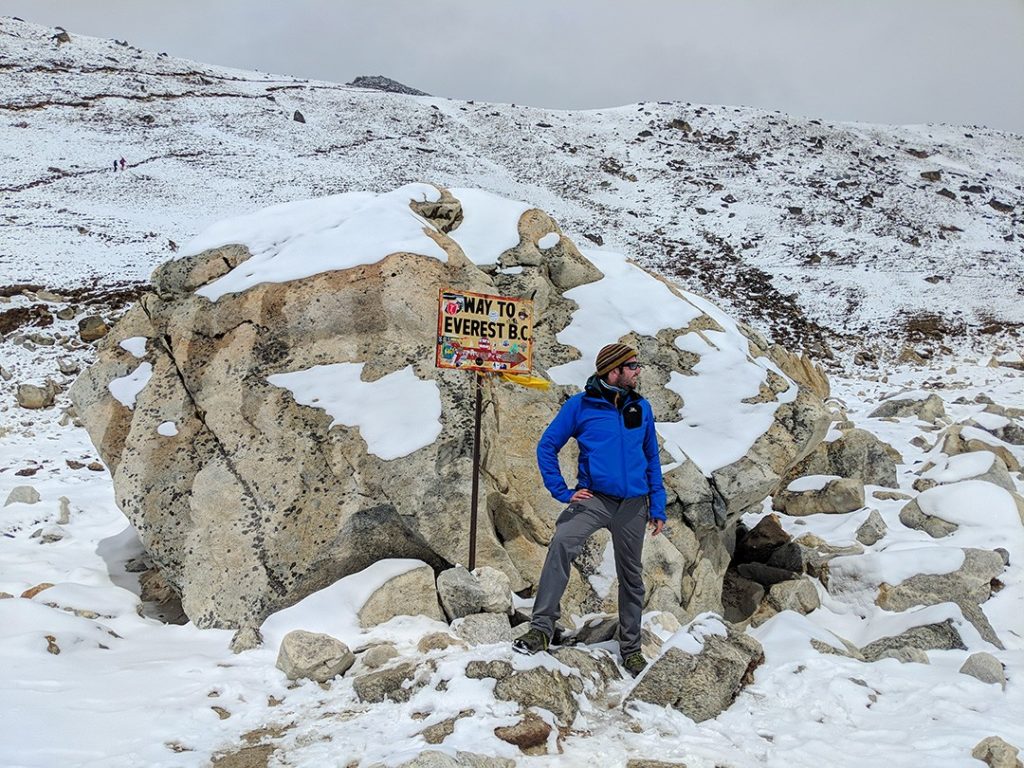
It’s worth noting that the EBC is a more social experience where you are guaranteed to meet and interact with other trekkers. Additionally, as you’re staying in teahouses and passing through villages on the EBC, you invariably meet and interact with more locals. I had more interesting interactions with Nepalis than Pakistanis.
That’s not to say that Pakistanis are not welcoming – they were incredibly hospitable and good-humoured – but the language barrier meant it was hard to form a strong connection. Simply put, I met more Nepalis than Pakistanis that spoke English – and I speak neither Nepali or Urdu.
Finally, and this is not to be sniffed at, is there a more iconic trek than the Everest base camp trek? There’s no denying that Everest is the highest mountain on the planet and trekking to the highest will always sound more impressive than trekking to the second highest.
My suggestion is simple: it doesn’t have to be Everest vs K2 – you can have the best of both worlds. First, trek to Everest base camp in Nepal, then go and trek to K2 base camp in Pakistan. Have your cake and eat it!
Enjoyed this post? pin it for later…
Read our Q&A-style guides on both treks:
